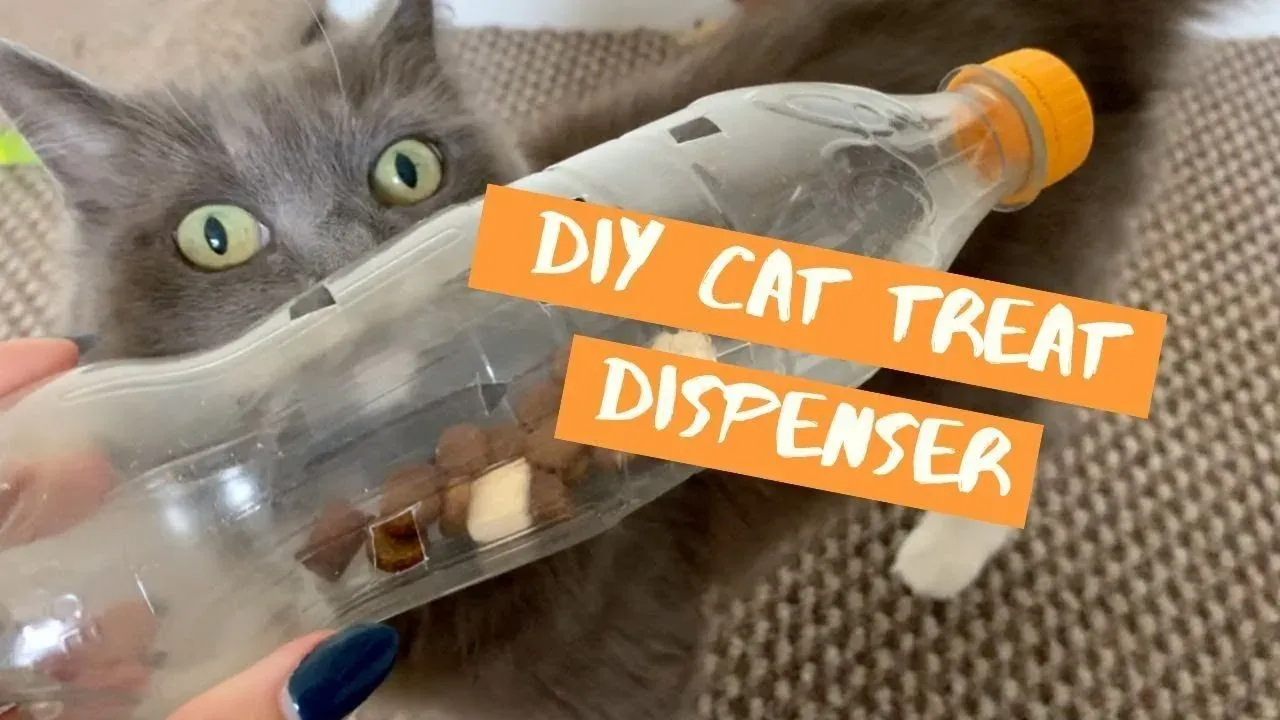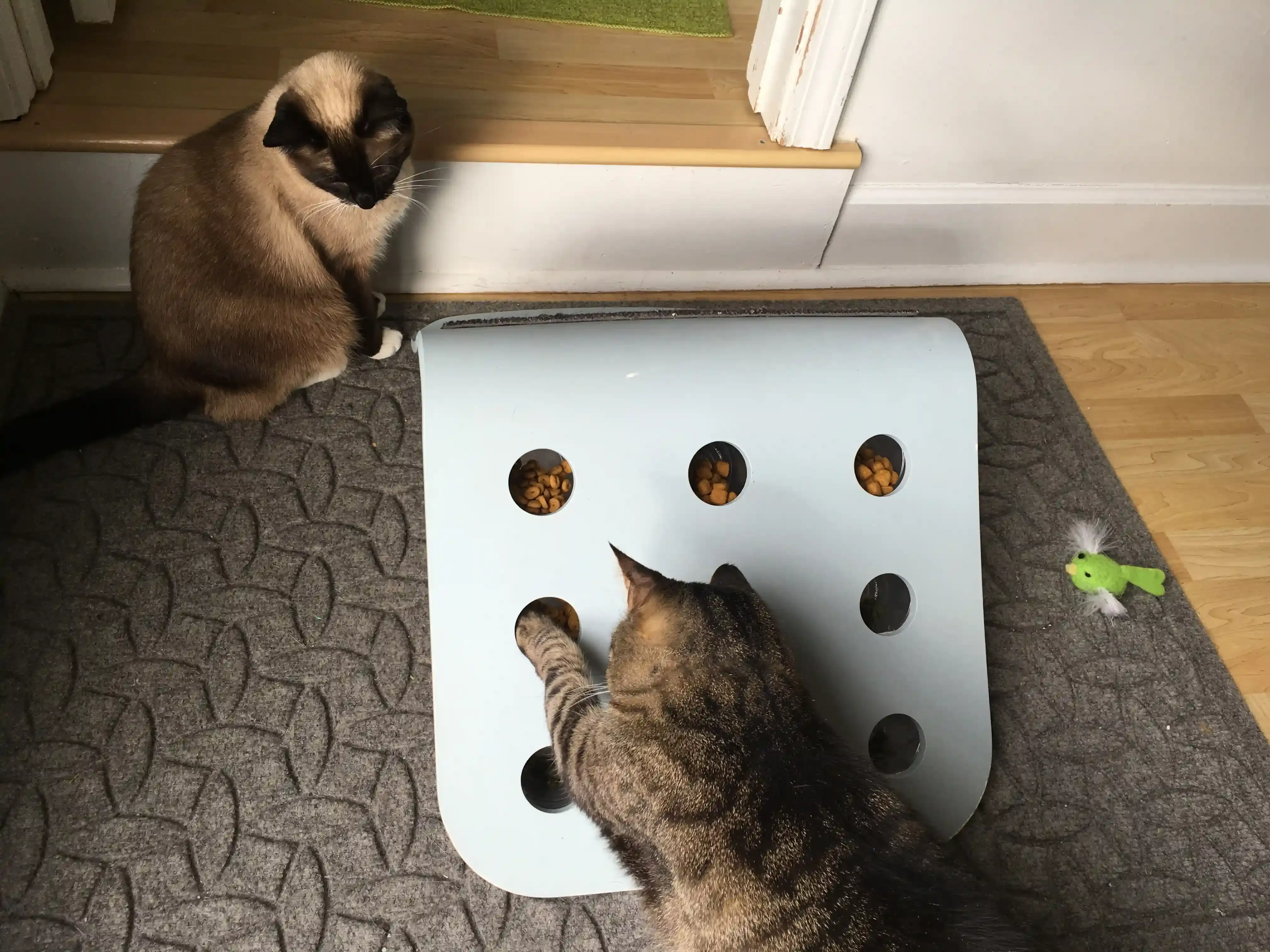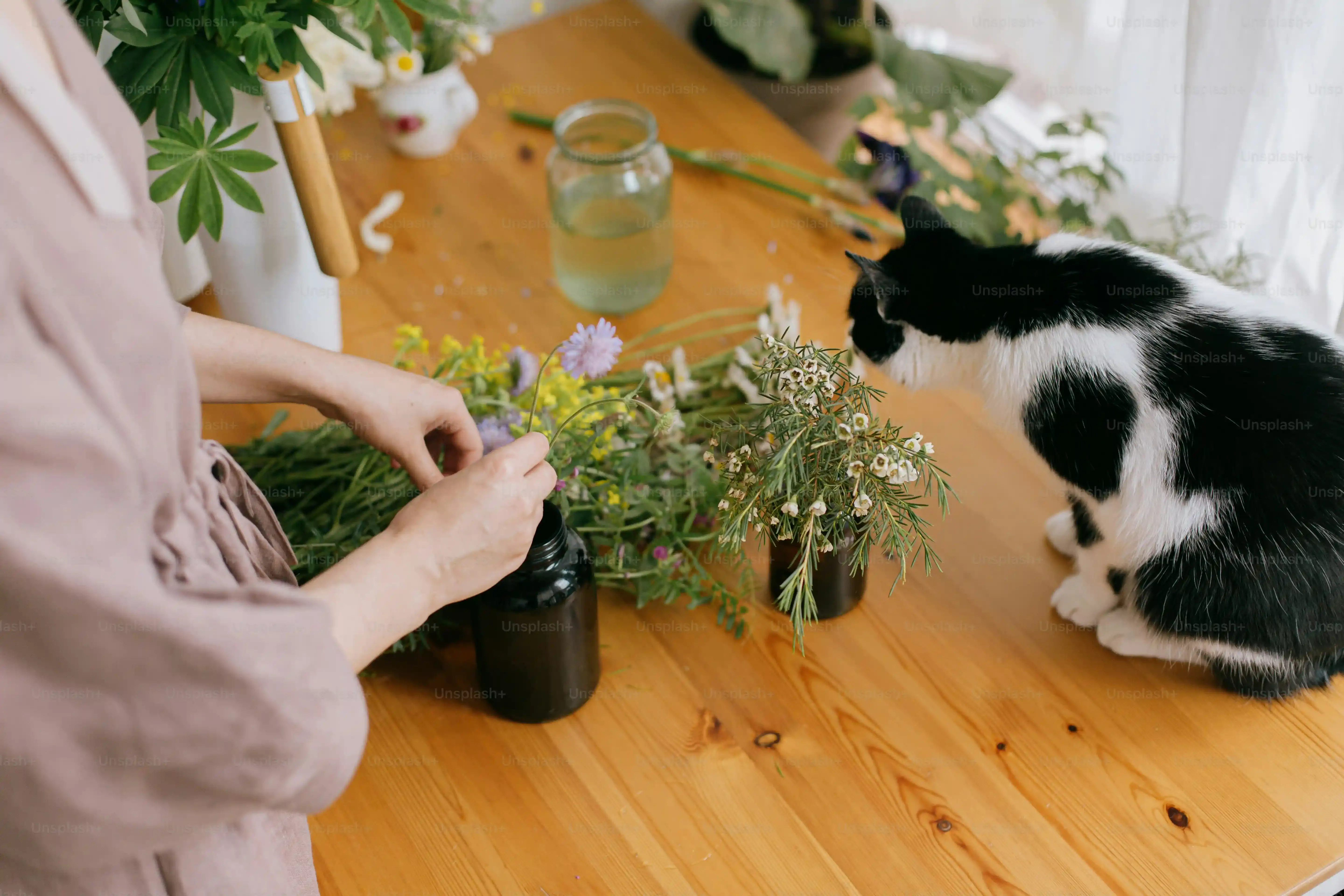Table of Contents
Ever stare at your cat, lounging like a furry king or queen, and wonder if they're secretly plotting world domination out of sheer boredom? Or maybe they express their ennui by batting things off counters or staging midnight zoomies that sound like a herd of elephants? Yeah, been there.
Why Your Cat Needs to Work for Their Dinner (It's Not Mean, Promise)

Why Your Cat Needs to Work for Their Dinner (It's Not Mean, Promise)
The Hunter Within: Why Free-Feeding Isn't Cutting It
Look at your cat. Really look. Even the fluffiest couch potato has a tiny tiger lurking inside.
Their ancestors, the ones who weren't binge-watching birds from a windowsill, spent most of their waking hours hunting.
It wasn't just about catching dinner; the hunt itself was the job.
Stalking, pouncing, problem-solving – it's hardwired into their brains.
When we just fill a bowl and leave it out all day, we're essentially taking away their life's work.
Imagine being told you don't need to do your job anymore, but you still have to hang around the office.
Sounds soul-crushing, right?
For cats, it can lead to boredom, frustration, and a whole host of behavioral issues.
More Than Just a Meal: The Benefits of Foraging
Making your cat work for their food isn't some cruel game; it's giving them a purpose.
Foraging taps into their natural instincts, providing crucial mental stimulation that a full bowl never will.
Think of it as puzzle time for their brain.
It also encourages physical activity as they bat, push, and maneuver the toys to get the kibble out.
This extra movement helps manage weight, a common issue for indoor cats.
Plus, breaking up meals into smaller, earned portions can sometimes help with digestion.
It can significantly reduce stress and anxiety, often manifesting as destructive behavior or excessive meowing.
So, what does 'working for dinner' actually look like for a house cat?
- Solving a puzzle to get a few pieces of kibble.
- Batting a treat ball around the room.
- Extracting food from a hidden location.
- Using paws and brains to manipulate an object.
Simple DIY Cat Foraging Toys to Start With (You Have This Stuff!)

Simple DIY Cat Foraging Toys to Start With (You Have This Stuff!)
Alright, so you're convinced your cat needs a job besides "professional napper." Great! Now you're probably picturing elaborate contraptions requiring power tools and a degree in engineering. Stop right there. The beauty of starting with simple DIY cat foraging toys is that you likely have everything you need sitting in your recycling bin or junk drawer right now. We're talking paper towel tubes, empty plastic bottles, old egg cartons – stuff you were going to toss anyway. No fancy materials required, just a few minutes and maybe some scissors or tape. The goal here isn't a museum piece; it's a functional puzzle that dispenses snacks and gives your cat's brain something to chew on besides your furniture.
Level Up Your DIY Cat Foraging Toys: Getting a Little Crafty

Level Up Your DIY Cat Foraging Toys: Getting a Little Crafty
Beyond the Cardboard Tube: Simple Upgrades
so you've mastered the toilet paper roll trick. Your cat is probably looking at you like, "Is that all you got?" Time to step up your game slightly. We're still not building rocket ships here, just taking those basic concepts and adding a twist. Think empty plastic water bottles – the crinkle is an instant win for many cats. Poke some holes around the side, big enough for a few kibbles to fall out when batted around. Make sure the edges of the holes are smooth so no kitty tongues get cut.
Egg cartons are another goldmine. Just drop some kibble into a few of the cups. Your cat has to figure out how to get them out – usually by hooking a paw in or flipping the carton over. It's a simple barrier, but effective. An old shoebox? Cut a few holes in the lid and sides. Toss some food inside. Now they have to work to nose or paw the pieces through the openings. These aren't complex engineering feats; they're just slightly more challenging versions of the 'find the food' game.
Combining Materials for More Puzzle Power
Ready to get *slightly* more ambitious with your DIY cat foraging toys? Let's combine a few ideas. Grab a small cardboard box (like a tissue box or small shipping box). Cut varying sizes of holes into the sides and top. Then, take some empty paper towel tubes or smaller boxes and tape or glue them *inside* the bigger box, creating compartments or barriers. Now, when you drop kibble in, it doesn't just fall to the bottom; it gets trapped in the tubes or behind the inner walls. Your cat has to work harder, tilting, shaking, and pawing to get the food to navigate the internal maze and fall out the exterior holes.
Another idea? Take a plastic container with a lid (like an old yogurt tub or butter container). Cut a few holes in the lid. Then, cut some slits or holes in the sides of the container itself. You can even hot glue or tape some cardboard pieces inside to create baffles. The kibble goes in through the lid holes, but then has to be maneuvered through the internal obstacles to reach the side holes where the cat can access it. Just ensure all edges are smooth and any tape or glue is secure and non-toxic once dry.
Simple Upgrade | Materials Needed | Difficulty Level |
|---|---|---|
Water Bottle Roller | Empty plastic bottle, scissors | Easy |
Egg Carton Puzzle | Empty egg carton, kibble | Super Easy |
Shoebox Digger | Shoebox, scissors | Easy |
Box Maze | Cardboard box, paper towel tubes/small boxes, tape/glue, scissors | Medium |
Container Challenge | Plastic container with lid, scissors, tape/glue (optional cardboard pieces) | Medium |
Thinking Vertically and Durably
Once you're comfortable with basic DIY cat foraging toys, you might start thinking about making them a bit more permanent or integrating them into your cat's environment. Consider a vertical feeder using PVC pipes or sturdy cardboard tubes mounted to a piece of wood or cardboard. Cut holes along the length of the tubes. When you drop kibble in the top, it gets stuck at various levels, and your cat has to reach in or bat at the holes to dislodge it. This adds a different dimension to the foraging experience.
For durability, think about using slightly sturdier materials than just thin cardboard if your cat is a destroyer. Hard plastic containers, thicker cardboard tubes, or even basic wood pieces (sanded smooth, no splinters!) can hold up better to enthusiastic play. Always supervise your cat with new toys, especially homemade ones, to make sure they aren't chewing off and ingesting pieces they shouldn't be. Safety first, then snacks.
Making Your DIY Foraging Toys a Hit with Your Cat

Making Your DIY Foraging Toys a Hit with Your Cat
Start Simple and Make it Easy
Alright, you've crafted your masterpiece – maybe it's a simple tube or a slightly more complex box maze. Don't just plop it down and expect your cat to instantly understand their new job. That's like handing someone a complex IKEA manual in Swedish and expecting them to build a wardrobe. You need to introduce these DIY cat foraging toys gradually. Start with the easiest design you made. Put just a tiny bit of their absolute favorite treat or a few pieces of kibble right where it's super easy to get out – maybe just peeking out of a hole or sitting on top of an egg carton cup. The goal is immediate success and positive reinforcement. Let them win the game right away. This builds confidence and curiosity.
Think of it as a training session, not a test. Some cats are naturally curious and will figure it out quickly. Others, especially those who've been free-fed their whole lives, might stare at it like it's an alien artifact. Be patient. Show them how it works by gently nudging a treat out yourself. Never force their paw or push their head into the toy; that just creates negative associations. Leave the toy out, perhaps with a few easy-to-access rewards, and walk away. Let them explore on their own terms.
Location, Location, Location (and High Value Rewards)
Where you put these DIY cat foraging toys matters. Don't stick it in a high-traffic area where they feel vulnerable or annoyed. Find a quiet spot where they like to hang out. Maybe near their favorite napping spot or a window they enjoy watching birds from. Vary the location occasionally to keep it interesting, but start somewhere familiar and safe.
The other crucial element? The reward itself. If you're using their regular kibble, and it's not particularly exciting to them, they might not bother. Use something higher value initially. A few pieces of freeze-dried chicken, a special crunchy treat they love, or even a pinch of tuna flakes (sparingly!). Once they get the hang of the foraging concept and associate the toy with good things, you can gradually transition to using their regular food. The smell of something irresistible is a powerful motivator for a cat contemplating whether solving your cardboard puzzle is worth the effort.
Tip for Success | Why it Works |
|---|---|
Start with easy designs | Builds confidence and prevents frustration |
Use high-value treats initially | Increases motivation and interest |
Place in quiet, safe locations | Encourages exploration without stress |
Show, don't force | Creates positive associations with the toy |
Keep it Fresh and Observe Your Cat
Once your cat is a pro at one type of foraging toy, don't just stop there. Cats get bored easily. Rotate the toys you offer. Introduce slightly more challenging versions as they master the easier ones. Remember that box maze? Once they conquer the simple one, make one with more internal barriers or smaller exit holes (but still large enough for the kibble!). Introduce vertical challenges if you haven't already. Keeping the puzzles novel prevents them from losing interest and ensures they continue to get that valuable mental workout.
Pay attention to how your cat interacts with the toys. Are they getting frustrated? Are they ignoring it completely? If so, maybe it's too hard, the reward isn't appealing enough, or the location is wrong. If they're destroying the toy instead of foraging, you might need a more durable design for that particular cat's play style. Every cat is an individual with their own preferences and problem-solving abilities. The goal isn't perfection; it's engagement. By making DIY cat foraging toys a regular part of their routine and keeping things varied, you're providing a vital outlet for their natural behaviors and enriching their indoor lives significantly.
Give Your Cat a Job (They Might Even Thank You)
So there you have it. Turning mealtime from a simple bowl dump into a foraging challenge isn't about making your cat's life harder; it's about making it richer. These simple diy cat foraging toys tap into what makes a cat a cat – the hunter, the puzzle-solver. You'll likely see less counter-surfing, fewer frantic sprints at 3 AM, and a generally more content, less-likely-to-plot-your-demise feline companion. Grab some cardboard, a few bottle caps, and give it a shot. Your cat's inner wildcat (and your sanity) will appreciate it.